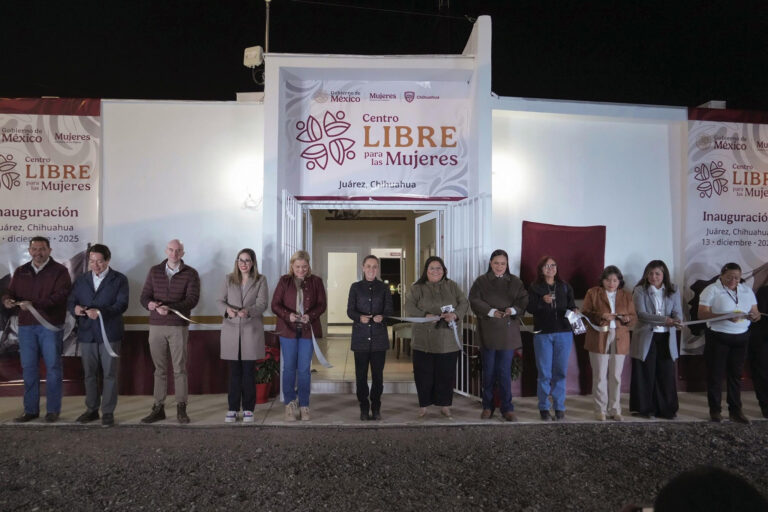Mexican Household Income Increased Over 10% in 2024
This article by Clara Zepeda appeared in the July 30, 2025 edition of La Jornada, Mexico’s premier left wing daily newspaper.
Mexico City. In Mexico, a household had an average monthly current income of 25,955 pesos in 2024, representing a 10.6 percent increase over the last two years of Andrés Manuel López Obrador’s administration, driven by employment, pensions, and social programs, according to data from the National Institute of Statistics and Geography (INEGI).
In presenting the 2024 National Household Income and Expenditure Survey (Enigh), INEGI detailed that Mexican households (38.8 million) saw an average increase in income of 2,491 pesos from 2022 to 2024. For the entire López Obrador administration, current income increased 15.66 percent.
The National Institute of Statistics (ENIGH), which aims to provide a statistical overview of household income and expenditures in terms of amount, source, and distribution, reiterated that earned income is the most important source of income for households in the country, with an average monthly income of 17,033 pesos (65.6 percent of income); this was followed by transfers such as pensions, scholarships, social programs, and donations (17.7 percent), amounting to an average monthly income of 4,600 pesos.
Average monthly labor income increased 10.5 percent from 2022 to 2024; while in the previous six-year period, the increase was 12.79 percent.
The average income from social program benefits was 833 pesos per month in 2024, higher than the 654 pesos in 2022 and well above the 326 pesos in 2018; that is, 155.5 percent of the 2018-2024 increase.
INEGI also specified that Mexican households will reach an average quarterly income of 77,864 pesos in 2024, 11 percent more than in 2022. Mexican households with higher incomes received 14 times more than those with lower incomes.
In 2024, households in the tenth decile (households with the highest incomes) reported an average quarterly income of 236,095 pesos, equivalent to 2,623 pesos per day per household and nearly 1,191 pesos per day per earner. In comparison, the 2022 Enigh survey recorded an income of 221,792 pesos in this same decile; that is, an increase of 6.4 percent over the last two years of López Obrador’s administration.
Meanwhile, on a quarterly average, the 10 percent of households with the lowest incomes in the country (first decile) received 16,795 pesos, around 5,598 pesos per month on average or 186.61 pesos per day per household.
During the previous administration, incomes in the tenth decile grew 4.16 percent; meanwhile, for those in the first decile, their incomes increased 35.89 percent from 2018 to 2024.
The National Institute of Statistics (ENIG) predicts that the states with the highest quarterly household income were Nuevo León, with 117,000 pesos; followed by Mexico City, with 111,000 pesos; and Baja California Sur, with 105,000 pesos.
On the other side of the coin, Chiapas was the state with the lowest average quarterly income, at 41,000 pesos; Guerrero and Oaxaca, with 49,000 and 52,000 pesos.
Inequality
Inequality in income distribution is measured by the Gini coefficient. In the ENIGH 2024 survey, for income distribution with transfers by household deciles, this coefficient was 0.391.
This highly relevant piece of data, the Gini coefficient, measures income inequality; the closer it is to one, the greater the inequality. In 2022, Mexico had a Gini coefficient of 0.413, reflecting high income concentration. In the 2016 edition, it was 0.449.
And one represents total inequality; only one person has the income; the closer it is to zero, the more it represents total equality (everyone earns the same).
-
People’s Mañanera December 23
President Sheinbaum’s daily press conference, with comments on travel across the country, ENCODAT, cardiac care, new ISSSSTE clinics, Texas navy accident, economic activity, and scrapping the video game tax.
-
Mexican Unions Formerly Affiliated with PRI are now with MORENA
President Sheinbaum has rejected corporatism and the bussing in of supporters, yet charro unions maintain a massive presence at government events in the Mexico City’s Zócalo.
-
Culture | Labor | News Briefs
Land of the Godínez: Work, Obedience & Dispossession in Contemporary Mexico
José Baroja’s satire is, in reality, pure sociology: the expression of an economic order & labour regime in Mexico that normalizes long hours, insufficient wages, constant evaluations, identity loss and the sacrifice of a personal life.




